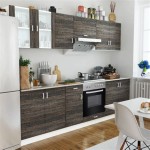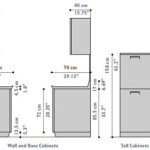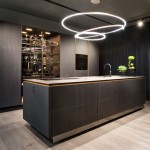Kitchen Floor Tile Ideas With Brown Cabinets
The kitchen is often considered the heart of the home, a space where meals are prepared, families gather, and memories are made. One of the most significant elements in achieving a functional and aesthetically pleasing kitchen is the selection of flooring. When brown cabinets are the focal point, choosing the right floor tile is crucial to creating a cohesive and inviting atmosphere. This article explores various kitchen floor tile ideas that complement brown cabinets, considering factors such as color, material, pattern, and overall design style.
Understanding the Nuances of Brown Cabinets
Brown cabinets encompass a wide spectrum of shades, ranging from light, honey-toned wood to rich, dark chocolate hues. The specific shade of brown significantly influences the choice of complementary floor tiles. Lighter brown cabinets often pair well with lighter, brighter tiles that enhance the feeling of openness and airiness. Conversely, darker brown cabinets can be grounded with deeper, more saturated tile colors or contrasted with lighter shades for a more dramatic effect. It's also important to consider the undertones of the brown. Some brown cabinets may have warm undertones (red or orange), while others may have cool undertones (gray or green). Choosing tiles with complementary undertones will create a more harmonious and balanced space.
Beyond the color of the cabinets, the style of the cabinets also needs to be considered. Are they modern, traditional, rustic, or contemporary? The floor tile should enhance the design aesthetic of the kitchen as a whole. For example, sleek, modern cabinets might pair well with large-format porcelain tiles, while rustic cabinets might be better suited to natural stone or textured ceramic tiles.
Exploring Color Palettes for Kitchen Floor Tiles
The color palette chosen for the kitchen floor tiles will dramatically impact the overall look and feel of the space. Several color options can work effectively with brown cabinets, each offering a distinct aesthetic:
Neutral Tones: Neutral colors, such as beige, cream, gray, and off-white, are versatile choices that complement brown cabinets beautifully. These colors create a clean, timeless look and provide a blank canvas for other design elements in the kitchen. Lighter neutral tones can brighten a kitchen with darker brown cabinets, while darker neutral tones can ground a kitchen with lighter brown cabinets. Gray tiles, in particular, have become increasingly popular in modern kitchens, offering a sophisticated and understated elegance.
Contrasting Colors: For those seeking a more dramatic effect, contrasting colors like white, black, or even bold shades like blue or green can be used. White tiles can create a crisp, clean contrast with brown cabinets, making the space feel brighter and more spacious. Black tiles can add a touch of sophistication and elegance, particularly when paired with lighter brown cabinets. When using bold colors, it's important to choose a shade that complements the undertones of the brown cabinets and to balance the color with other neutral elements in the kitchen.
Earthy Tones: Earthy tones, such as terracotta, rust, and olive green, can enhance the natural warmth of brown cabinets. These colors create a cozy and inviting atmosphere, reminiscent of a rustic farmhouse kitchen. Terracotta tiles, in particular, can add a touch of Mediterranean charm to the space. Consider the specific shade of brown and the desired overall aesthetic when selecting earthy tones. Lighter earthy tones will work well with lighter brown cabinets, while darker earthy tones will ground darker cabinets.
Wood-Look Tiles: Wood-look tiles offer the warmth and beauty of real wood flooring with the durability and water resistance of tile. These tiles are available in a wide range of colors and styles, including shades that mimic natural wood tones and painted wood finishes. Wood-look tiles can be a great option for creating a cohesive and natural look in a kitchen with brown cabinets.
Material Options for Kitchen Floor Tiles
The material of the kitchen floor tiles also plays a crucial role in both aesthetics and functionality. Several popular tile materials offer different characteristics and benefits:
Ceramic Tiles: Ceramic tiles are a cost-effective and versatile option for kitchen flooring. They are durable, water-resistant, and easy to clean. Ceramic tiles are available in a wide range of colors, patterns, and sizes, making them a suitable choice for various kitchen styles. The key advantage of ceramic tiles is their affordability and ease of maintenance.
Porcelain Tiles: Porcelain tiles are similar to ceramic tiles but are denser and more durable. They are also more water-resistant, making them a suitable choice for high-moisture areas like kitchens. Porcelain tiles are available in a wide range of styles, including those that mimic natural stone, wood, and concrete. Porcelain tiles are an excellent option for high-traffic kitchens where durability is a priority.
Natural Stone Tiles: Natural stone tiles, such as granite, marble, slate, and travertine, offer a unique and luxurious look. Each stone has its own distinct characteristics, including variations in color, pattern, and texture. Natural stone tiles are durable and can add value to a home, but they also require more maintenance than ceramic or porcelain tiles. They also have a higher price point. They commonly need to be sealed regularly to protect them from stains and water damage.
Vinyl Tiles: Vinyl tiles are a resilient and affordable option for kitchen flooring. They are water-resistant, easy to clean, and comfortable to walk on. Vinyl tiles are available in a wide range of styles, including those that mimic wood, stone, and ceramic tiles. They are often a good choice for homeowners seeking a budget-friendly and low-maintenance flooring option.
Patterns and Layouts to Enhance the Kitchen Design
The pattern and layout of the kitchen floor tiles can significantly impact the overall design of the space. Different patterns can create different visual effects, adding interest and dimension to the kitchen:
Straight Lay: A straight lay pattern involves laying the tiles in a simple, straight line. This is a classic and versatile pattern that works well with various tile sizes and shapes. It creates a clean and modern look, particularly when used with large-format tiles.
Staggered Lay (Brick Pattern): A staggered lay pattern, also known as a brick pattern, involves offsetting the tiles in each row, creating a staggered effect. This pattern adds visual interest and can make a space feel larger. It is often used with rectangular tiles, such as those that mimic wood planks.
Herringbone Pattern: A herringbone pattern involves laying the tiles in a V-shaped pattern, creating a dynamic and visually appealing design. This pattern is often used with rectangular tiles and can add a touch of sophistication to the kitchen.
Checkerboard Pattern: A checkerboard pattern involves alternating two different colored tiles in a checkerboard arrangement. This pattern creates a classic and timeless look, particularly when used with black and white tiles.
Mosaic Pattern: Mosaic tiles are small tiles that are arranged in a pattern or design. They can be used to create intricate and decorative floors. Mosaic patterns can also be combined with other types of tiles to create a unique and personalized design.
The layout of the tiles can also impact the perception of space. Laying tiles diagonally can make a small kitchen feel larger, while laying tiles in a border pattern can define different areas within the kitchen. Large-format tiles can create a sense of spaciousness, while smaller tiles can add texture and visual interest.
Considerations for Lighting and Kitchen Size
The amount of natural and artificial light in the kitchen should be taken into consideration when choosing floor tiles. In a kitchen with limited natural light, lighter-colored tiles can help to brighten the space. Conversely, in a kitchen with abundant natural light, darker-colored tiles can add depth and warmth. The type of lighting fixtures used in the kitchen can also influence the choice of floor tiles. Warm-toned lighting can enhance the warmth of earthy-toned tiles, while cool-toned lighting can complement gray or blue tiles.
The size of the kitchen should also be considered. In a small kitchen, larger tiles can create a sense of spaciousness, while smaller tiles can make the space feel cluttered. In a large kitchen, smaller tiles can add texture and visual interest, while larger tiles can create a sense of elegance and sophistication. It is beneficial to experiment with different tile sizes and layouts to determine the best option for the specific kitchen space.
When choosing kitchen floor tiles to complement brown cabinets, it's important to consider the overall design aesthetic of the kitchen, the specific shade of brown, the amount of natural light, and the size of the space. By carefully considering these factors, a cohesive and aesthetically pleasing kitchen can be created that reflects the homeowner's personal style and preferences.

103 White Backsplash Ideas Absolutely Stunning Tile

Tile Flooring Ideas For Any Portland Kitchen Design Style

Tan Kitchen Floor Tile Dark Cabinets With Design Ideas Pictures Remodel And

7 Best Kitchen Flooring Ideas Monterey Ca Cypress Design Build

Marble Kitchen Floor Solutions Systems

20 Best Kitchen Flooring Tile Ideas Tips And Trends

Kitchen Tile Ideas Getting The Wow Factor Checkatrade Blog

How Much Does A New Kitchen Floor Cost

25 Remarkable Kitchens With Dark Cabinets And Granite Great Photos

30 Stunning Brown Kitchen Cabinet Ideas Cabinetselect Com
Related Posts








